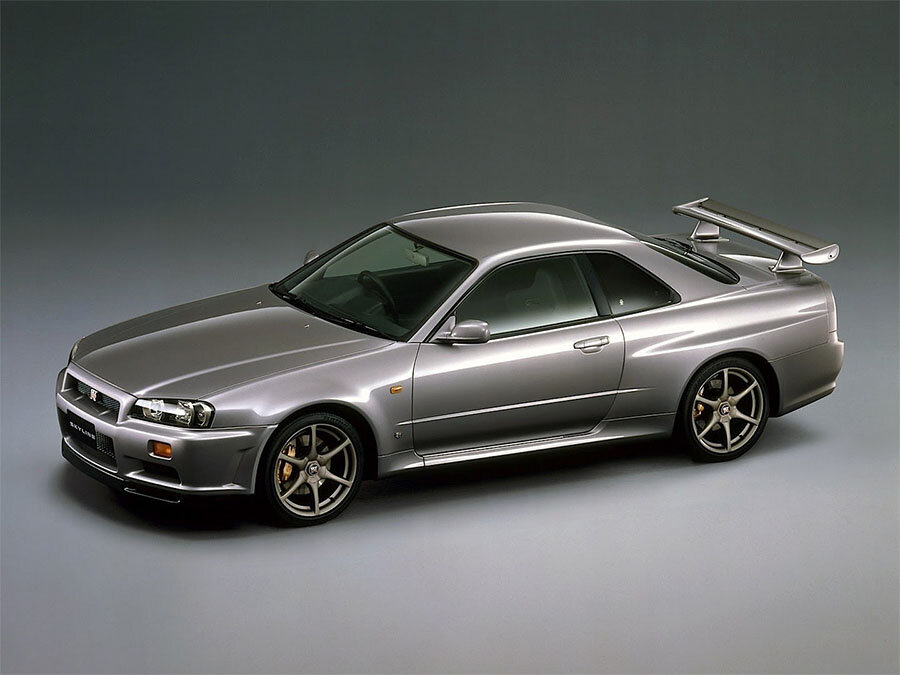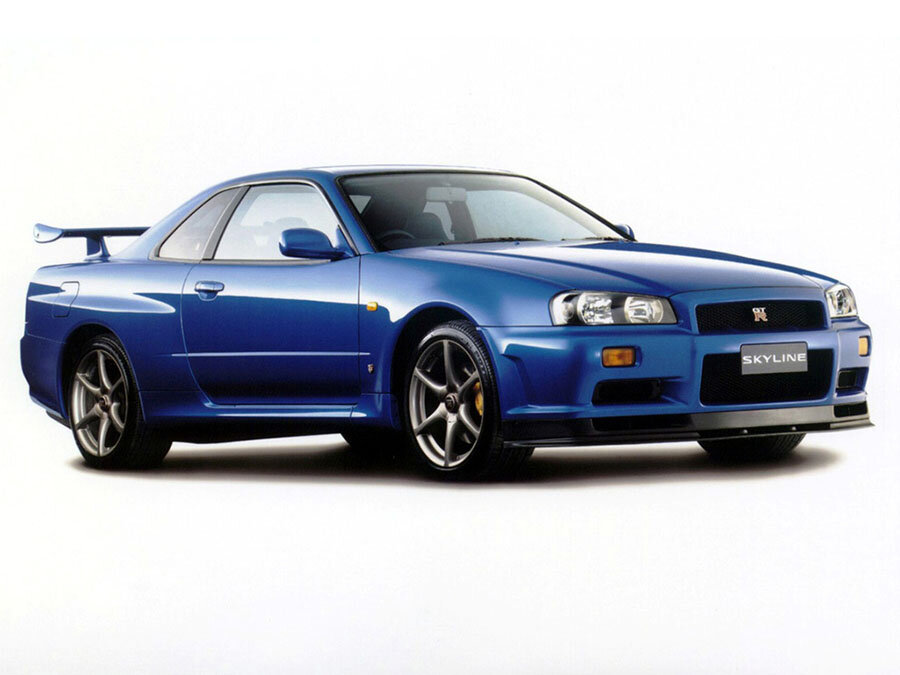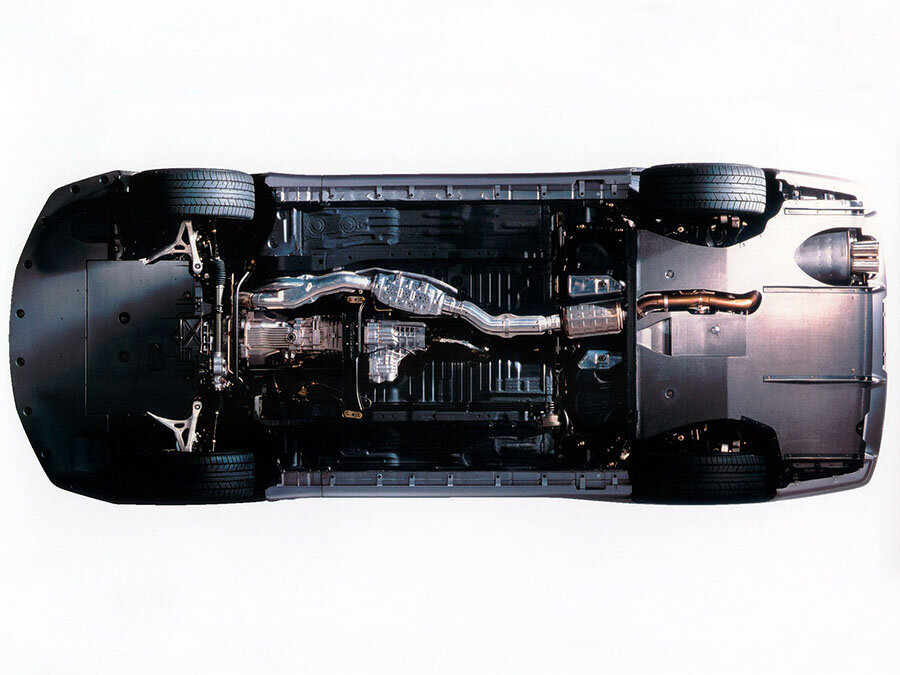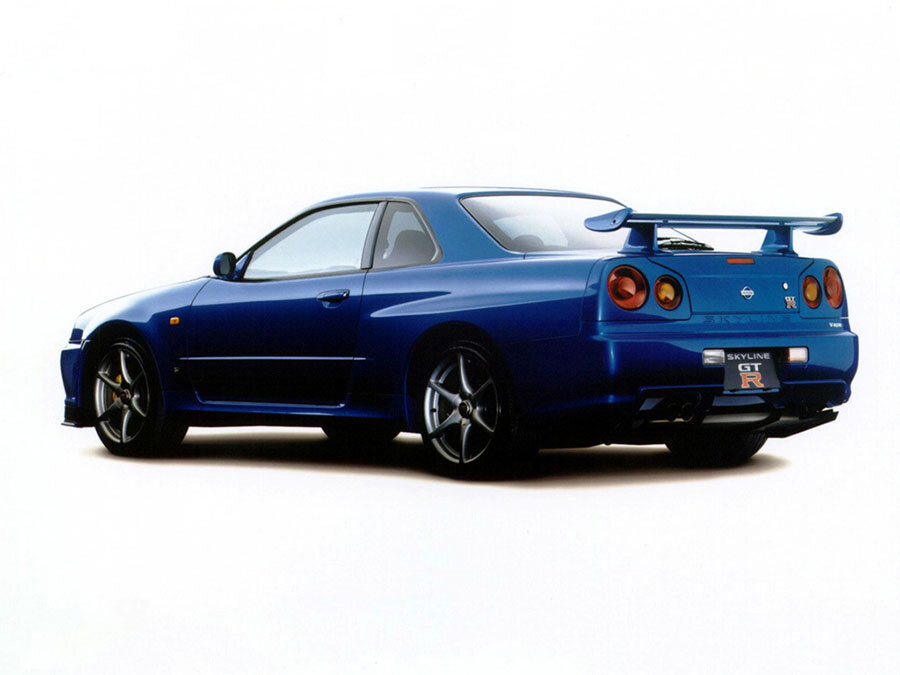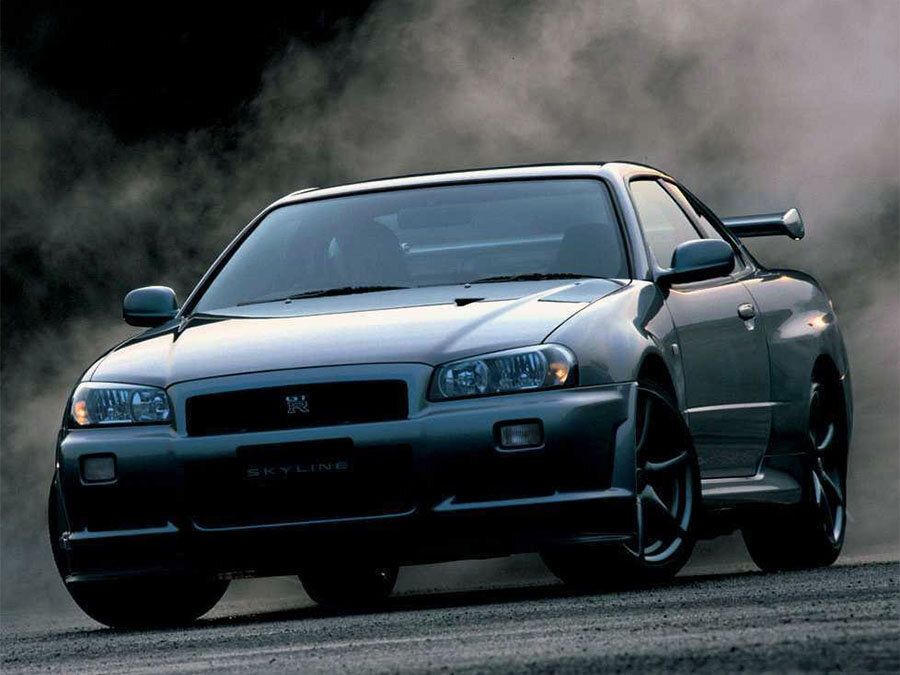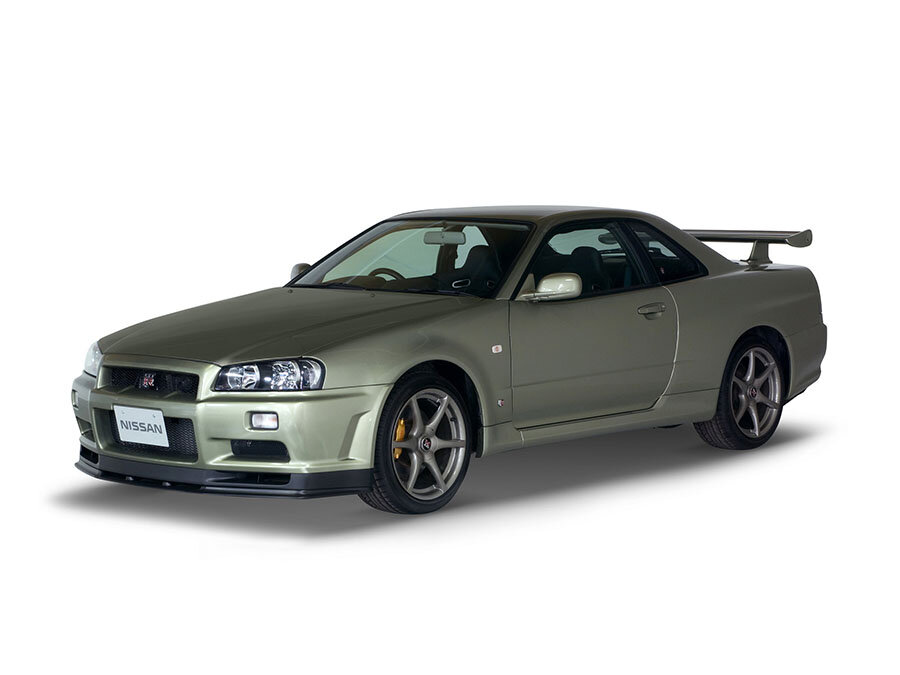Guide: Nissan R34 Skyline GT-R - a Historical & Technical Appraisal
/BACKGROUND
The re-introduction of the Skyline GT-R in 1989 proved to be one of Nissan's smartest decisions.
The GT-R moniker had disappeared in 1973 when Nissan abandoned their line of super high performance Skylines for commercial reasons. By this time, two different variants had been created (on the C10 and C110 platforms), both of which were conceived to demonstrate Nissan’s high performance credentials.
While the Skyline name subsequently stuck around, Nissan chose not to offer the C210, R30 or R31 models in GT-R trim. Instead, customers wanting the fastest, most powerful Nissans had to buy a Z car like the 240Z, 260Z, 280Z or later, the 300ZX.
Nissan revived the GT-R when the R32 Skyline was launched in 1989. The R32 GT-R was created specifically to homologate a Group A motor sport variant that could compete in touring car racing. 5000 road-going examples would have to be built within a twelve month period, a figure Nissan felt they could just about reach.
However, demand for the R32 GT-R proved so great that around 44,000 were eventually built and the model became an icon of the early nineties automotive scene.
Following this unexpected success, a follow up model was deemed essential; the R33 GT-R, built between 1995 and 1998, was equally well received.
In May 1998, Nissan started production of the R34 Skyline. By now, there was no question a GT-R variant would join the range.
The R34 GT-R was unveiled at the Tokyo Motor Show in October 1998. From the outset, it was offered with the optional V Spec pack that included a number of chassis, aerodynamic and interior enhancements. An even more extreme N1 variant (covered separately) was also created for homologation purposes.
Production of all three variants began in January 1999.
CHASSIS
To address some of the minor criticism aimed at the R33’s bulk, the R34’s steel bodyshell was made a little smaller. The wheelbase was reduced from 2720mm to 2665mm. Overall length was cut by 75mm thanks in part to a shortened rear overhang.
At 1785mm, the R34 was 5mm wider than its predecessor. Height was unchanged at 1360mm.
Rigidity was increased by 56%.
Once again, fully independent multi-link suspension was fitted all round along with anti-roll bars at either end. Compared to the R33, the front lower suspension arms were now a single piece of aluminium which saved 2.5kg. There were also stiffer rear lower A-arms and harder rubber bushings.
Lateral stiffness was improved by 30% and camber stiffness by 25%.
Front and rear strut tower bars were also installed.
As per the R33, the R34 GT-R came with ventilated disc brakes and aluminium calipers supplied by Brembo. 324mm diameter discs with four-piston calipers were fitted at the front and 300mm diameter discs with two-piston calipers were used at the back.
A new ABS control unit was standard and the power-assisted Super HICAS four-wheel steering was given a major revamp.
9-inch wide alloy wheels were retained, but the diameter was increased from 17 to 18-inches. The wheels came with a new six spoke design and were shod with Bridgestone Potenza tyres.
The fuel tank, located under the boot floor, was kept at 65-litres.
ENGINE / TRANSMISSION
In the engine bay was the latest iteration of the water-cooled RB26DETT dual overhead camshaft straight six that had powered both previous GT-R variants.
Nissan’s senior vice president, Hideaki Watanabe, had wanted to use an aluminum block V6 as proposed by Kazutoshi Mizuno. However, Nissan were forced to use a revamped version of the original unit on cost grounds.
The R34 GT-R engine once again featured a light alloy four valve head, twin turbos and displaced 2568cc thanks to a bore and stroke of 86mm and 73.7mm respectively.
New equipment included individual throttle bodies for all six pistons and more durable water-cooled ceramic turbochargers with ball-bearings.
There was also a new intercooler and new exhaust turbo outlets that saved 2.8kg over their R33 equivalents.
The exhaust system came with a spring-loaded valve which helped to increase exhaust gas velocity below 4000rpm. It also opened up to reduce backpressure at higher revs.
Nissan fitted their EGI (ECCS) electronically controlled fuel-injection system.
The compression ratio was kept at 8.5:1.
Visually, this latest engine could be identified on account of its Cherry Red valve covers that replaced the black used on previous models.
Peak power was officially unchanged with 276bhp at 6800rpm. This was the figure all Japanese manufactures had officially agreed not to exceed on safety grounds. The R34’s torque rating went from 271lb-ft to 289lb-ft at the same 4400rpm as before.
The five-speed manual gearbox found on the R33 was switched to a more durable six-speed Getrag V160 unit.
Transmission was via the ATTESSA E-TS permanent four-wheel drive system.
BODYWORK
Cosmetically, the R34 GT-R was more streamlined than its predecessor, but did not offer quite the same visual appeal.
Compared to other models in the R34 range, the GT-R came with custom fender flares and a revised aero pack that included additional spoilers, deep side skirts and a smoother underbody.
The nose was opened up with no less than half-a-dozen intake ducts and Xenon headlights were fitted as standard. The deep front spoiler was finished in satin black to give the front a more slender profile.
Where the R34 most obviously differed from the R33 was its truncated tail.
The hood and adjustable two-stage rear spoiler were fabricated from aluminium. The rest of the body was steel.
INTERIOR
As per the rest of the R34 range, the GT-R’s interior was completely redesigned.
The dash, instrument binnacle, centre console, door panels and seats were all new, but as usual, cheap materials like dark grey plastic and fabric upholstery were used throughout.
All the instrumentation was housed in a curved binnacle directly behind the three-spoke steering wheel. A combined 10,000rpm rev counter / oil pressure gauge was flanked by a 180mph / 300kph speedometer. Smaller read outs for water temperature and fuel were located in each corner.
The binnacle was given a brushed aluminium fascia to match the centre console.
Mounted atop the centre console was a new 5.8-inch Multi-Function Display (MFD) that showed seven different live readings to include turbo pressure.
The steering wheel, gear knob and handbrake grip were covered in black leather. The bucket seats were upholstered in grey fabric to match the door panels.
Driver and passenger airbags were standard along with air-conditioning, electric windows, remote central locking and a four-speaker AM/FM radio cassette player.
WEIGHT / PERFORMANCE
The standard R34 GT-R weighed in at 1540kg.
Top speed was electronically limited to 156mph and 0-62mph required 5.4 seconds.
By setting a time of 7 minutes 52 seconds around the Nurburgring, the R34 GT-R could claim to be the fastest road legal series production car at the time.
OPTIONS
Nissan offered a variety of factory-fitted optional extras to include privacy glass, a Multi AV system (with voice-guided satellite navigation, six speakers and a CD auto changer) and the Nismo MFD which came with a lap timer, G-force meter and an increase in boost measurement to 2 bar.
Customers could also specify complete deletion of the audio system if they wished.
In addition to factory-installed upgrades, Nissan dealers would typically fit all manner of parts from the Nismo catalogue.
Nismo (Nissan’s official motorsport department) could supply a plethora of extras to include Dress Up parts (front fog lights, headlight eye lids, gold badge set, decal kits, wide angle door mirrors and floor mats), Tuning Parts (Nismo exhaust, Nismo air filter, Nismo oil cooler and air guides for the front bumper, a carbonfibre air intercooler guide, uprated brake pads and uprated brake discs) as well as a variety of audio head unit and satellite navigation upgrades.
V SPEC
There was also the option of specifying the V Spec package which came direct from the factory with a host of improvements.
Perhaps most notably, the V Spec bundle included an ATTESSA E-TS Pro four-wheel drive system. Unlike the standard ATTESSA E-TS system, the Pro version came with an active electronic limited-slip differential integrated with the four-wheel drive system as opposed to a conventional mechanical LSD.
Cosmetically, the V Spec GT-R came with a more advanced aero system that comprised a deep front spoiler and additional air guides cut for the front brakes. There was also a carbonfibre rear apron with integrated diffuser to smooth underbody airflow.
Lower, firmer suspension was fitted along with intake and exhaust gas temperature read outs to the MFD.
Weight was up by 20kg (from 1540kg to 1560kg).
V SPEC GREAT BRITAIN / HONG KONG / NEW ZEALAND / SINGAPORE
V Spec R34 GT-Rs destined for Great Britain, Hong Kong, Singapore and New Zealand came with an even higher specification. These cars received specially balanced N1 specification engines that featured twin ball bearing ceramic turbochargers with steel blades.
They also came with a trio of Nismo oil coolers for the engine, transmission and rear differential plus a re-mapped ECU and full Connolly leather upholstery.
Weight went from 1560kg to 1666kg, primarily as a result of the better quality interior materials.
R34 GT-R SERIES 2
In October 2000, Nissan ushered in a number of updates that appeared on all GT-R variants. These cars are unofficially regarded as Series 2 iterations.
Under the skin, Nissan added larger rear brakes, plastic instead of aluminium end tanks, an orange instead of white fusebox cover and a silver instead of blue VIN plate.
Outside, clear turn signals replaced the old amber items, the wheel finish was made darker (and lost its bronze tint), shadow chrome inserts were added to the Xenon headlights and the carbonfibre rear apron was given a slightly different weave pattern.
There were also a number of cockpit changes.
The seats were now upholstered in black rather than grey cloth. Silver instead of red stitching was used on the steering wheel and handbrake lever. The gear knob came with a different font and an iridium centre console was added. Additionally, the pedals and foot rest were switched to aluminium, a Toshiba MFD screen replaced the old Sharp unit, the stereo was uprated from 60w to 80w and the cockpit-adjustable headlight level switch was deleted.
The optional TV / navigation system became DVD instead of AV-based.
R34 GT-R SERIES 2 V SPEC II
At the same time, Nissan replaced the V Spec with the V Spec II which came with all the Series 2 updates on top of the original V Spec package plus further stiffened suspension, a new carbonfibre bonnet complete with NACA duct and a carbonfibre rear wing element.
From 2001, a larger Nissan badge was added to the tail of all cars.
R34 GT-R SERIES 2 M SPEC
In May 2001, a further enhanced option pack was added to the range known as M Spec.
The R34 GT-R M Spec came with all the V Spec II goodies apart from the carbonfibre hood which was replaced with a standard aluminium item.
Special equipment unique to the M Spec included Ripple control dampers, a stiffer rear anti-roll bar, leather upholstery complete with embroidered GT-R insignia, heated front seats and gold stitching for the steering wheel and shift knob.
The ‘M’ moniker was in honour of the GT-R’s chief engineer, Kazutoshi Mizuno.
Weight was up by 20kg compared to the standard V Spec II at 1580kg.
R34 GT-R SERIES 2 V SPEC II NURBURGRING & M SPEC NURBURGRING
From February 2002, Nissan offered an optional Nurburgring upgrade pack on the V Spec II and M Spec variants.
The engine fitted to these cars was based on the power unit found in the N1 homologation special. It came with altered camshaft timing, bigger turbos and increased boost; for added durability, the turbo’s ceramic blades were replaced with steel. A ball bearing centre section allowed the turbos to spool faster.
Although advertised as putting out 276bhp, Nurburgring edition GT-Rs actually produced in excess of 330bhp.
They were immediately identifiable by their gold engine valve covers and matching gold VIN plate.
PRODUCTION
Nissan built the R34 GT-R from January 1999 until August 2002.
11,578 examples were produced.
It was subsequently replaced by a stand-alone GT-R that was a separate model from the rest of the Skyline range.
Production figures for the R34 GT-R were as follows:
R34 GT-R Series 1 Pre-Production: 20
R34 GT-R Series 1: 2709
R34 GT-R Series 1 V Spec: 4193
R34 GT-R Series 1 V Spec N1: 38
R34 GT-R Series 1 V Spec Great Britain: 81
R34 GT-R Series 1 V Spec Hong Kong: 10
R34 GT-R Series 1 V Spec Singapore: 10
R34 GT-R Series 1 V Spec New Zealand: 5
R34 GT-R Series 2: 1268
R34 GT-R Series 2 V Spec II: 1855
R34 GT-R Series 2 V Spec II Nurburgring: 718
R34 GT-R Series 2 V Spec II N1: 18
R34 GT-R Series 2 V Spec II New Zealand: 2
R34 GT-R Series 2 M Spec: 366
R34 GT-R Series 2 M Spec Nurburgring: 285
Text copyright: Supercar Nostalgia
Photo copyright: Nissan - https://www.nissan-global.com
